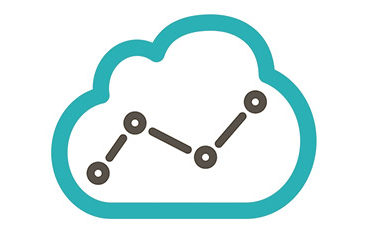Solving the IoT’s Greatest Hurdle – Interoperability

via Shutterstock
The McKinsey Global Institute cited interoperability as the difference between the Internet of Things (IoT) being a $7T market and a $11.1T market by 2025. The more devices we are able to connect, the more powerful our data and insights will be, but in order to unlock the potential of IoT, the industry must first find a solution to its $4 trillion problem.
Can standards take us there or is there another free-market solution? Let’s take a look at the complex communications stack that devices use and the different options that are available now:
If you’re using IoT tech made by different manufacturers that use various communication layers and combinations, communication between devices will likely be misunderstood and not function correctly. A farmer could have soil moisture sensors from one manufacturer that he bought several years ago that don’t communicate with his new smart tractor from a different manufacturer. The problem could be caused by the devices using different protocols - one Wi-Fi and the other ZigBee - or each requiring data to go through a proprietary cloud. While purchasing all smart devices from one manufacturer might be a short-term solution, it won’t solve the industry’s interoperability problem in the long run.
How can the industry enable interoperability between devices? We’ve provided a few solutions below:
- Wait for a consensus amongst the industry: Though not ideal for most developers, lower priority IoT projects can be paused or delayed until there is a consensus on IoT standards. There is no clear timeframe, however, and there will inevitably be some legacy devices that can’t be easily or cost-effectively replaced.
- Work in a closed ecosystem with organization-defined standards (e.g. OCF, IIC): Selecting all devices and architectures based on an organization’s recommendations could be another interoperability option. With the Open Connectivity Foundation and AllSeen merging recently, they can provide a strong roadmap for IoT standards. However, major corporations like Apple, Google and Amazon still aren’t involved in this organization. Without these key players, it’s clear that there is yet to be an established group to fully standardize IoT offerings. While there’s always an option to lock into an ecosystem, this limits flexibility to select any device and often drives up prices because users must buy from within that ecosystem.
- Add gateways and other hardware to translate and connect different stacks: This approach is currently being utilized throughout the world, but adds to the implementation complexity and cost because it adds extra hardware and steps to get data to where it needs to go. So, yes, this is a solution to make things work together, but it’s often not cost-effective for projects looking for a positive ROI.
- Abstract and decouple elements of the communications stack: This method works around the incompatibilities by decoupling communication layers to allow certain layers to be swapped out. This approach can enable significant flexibility in communications in the short term. With the right software in place, lower layers, such as link and transport, can be very different yet still work with a MQTT application layer.
While a consensus on standards is a big part of the long-term interoperability solution, there are other ways to achieve this in the short-term that focus on abstracting much of this complexity from the communications stack. This involves using software to help old and new devices communicate more easily, regardless of manufacturer or stack choice.
Leveraging a combination of these approaches, interoperability should be achieved in projects happening now. Companies that wait on IoT risk being left behind; at the same time, they must be aware of the challenges such projects face – chief among them being how to get devices to seamlessly work together.
Arup Barat is co-founder and chief commercial officer of infiswift.













